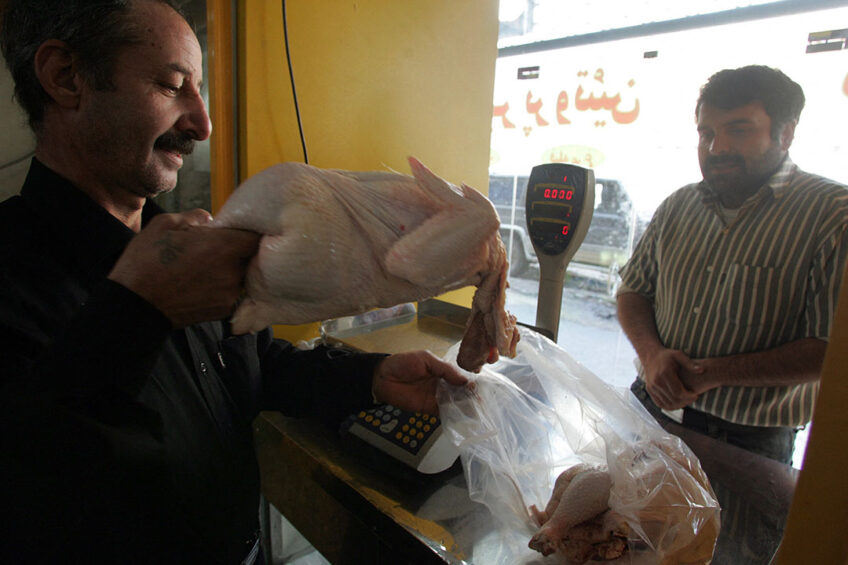Iran: Concerns over a poultry industry collapse

Iran could see mass closures of poultry farms in the next 3 months, as the government’s plan to tame food inflation with price caps make farm-gate prices extremely unjustified, local newspaper Sarpoosh reported, citing local business groups.
Habib Asadollahnejad, CEO of the National Union of Broiler Farmers told the publication that the average production costs in the industry were close to 50,000 tomans per kg ($1.51, estimated based on the free market exchange rate), while the wholesale price is limited to 30,000 tomans per kg ($0.90). Under the current conditions, farmers lose the incentive to keep operating even though the authorities promise to give a helping hand in the form of subsidies aimed at supporting their working capital, Asadollahnejad said.
The Minister of Agriculture has given an ultimatum to the producers that if they shut down farms, they would have to pay heavy fines.
Biting prices
The price is regulated by the Iranian government, which struggles against soaring food inflation. In early May, Iran was hit by some of the strongest food riots in the past decade after the government cut subsidies for eggs, chicken, dairy products and cooking oil. A violent crackdown by the authorities on the protests has resulted in several deaths and scores of arrests, according to local human rights activists. In the wake of protests, the government seems reluctant to revise prices in order not to cause a new wave of social unrest.
Widening gap
The Iranian poultry industry became accustomed to the price caps over the past few years, taking advantage of feedstuff subsidies and state aid provided in other forms. However, the gap between the government price and production costs has widened in 2022 due to a mix of factors, including the rising price of grain on the global market, and a slump in the exchange rate of the Iranian national currency. According to Asadollahnejad it is not only small-scale broiler farmers that are in trouble it is now also large production units.
Broiler meat production volumes decrease daily
Mohammad Yousefi, another spokesperson for the National Union of Broiler Farmers estimated that Iran produces nearly 2.3 million tonnes of broiler meat per year, but the production performance decreases almost daily now. “The Minister of Agriculture has given an ultimatum to the producers that if they shut down farms, they would have to pay heavy fines. These warnings are irrational. If the government wants farms to keep running, it will buy chicken for 60,000 tomans ($1.81) per kilogram and sell it to people for 20,000 ($0.60) tomans per kilogram,” Yousefi said.
Layers sent to slaughterhouses
Hamid Kashani, chairman of Homeland Poultry Farmers’ Union, another poultry producers association, also said that egg producers have started sending hens to slaughterhouses, as the wholesale prices on the domestic egg market were by 50% below the real level. Kashani explained that the production costs had soared due to skyrocketing grain prices.












